Installing a stand-alone solar system means fulfilling all your energy needs with energy from the sun and no help from the electrical grid.
For this reason, these systems often require setting up your solar power system with energy storage options.
Stand-alone solar systems did not start as an attractive option.
In truth, previous models had large space requirements and high costs. However, advances in solar technology have made these systems less expensive and space-efficient.
But are stand-alone solar systems better than off-grid systems? And what benefits can they offer you?
This article will provide answers and more details on things to consider before installing these solar power systems.
What is Stand-Alone Solar Systems?
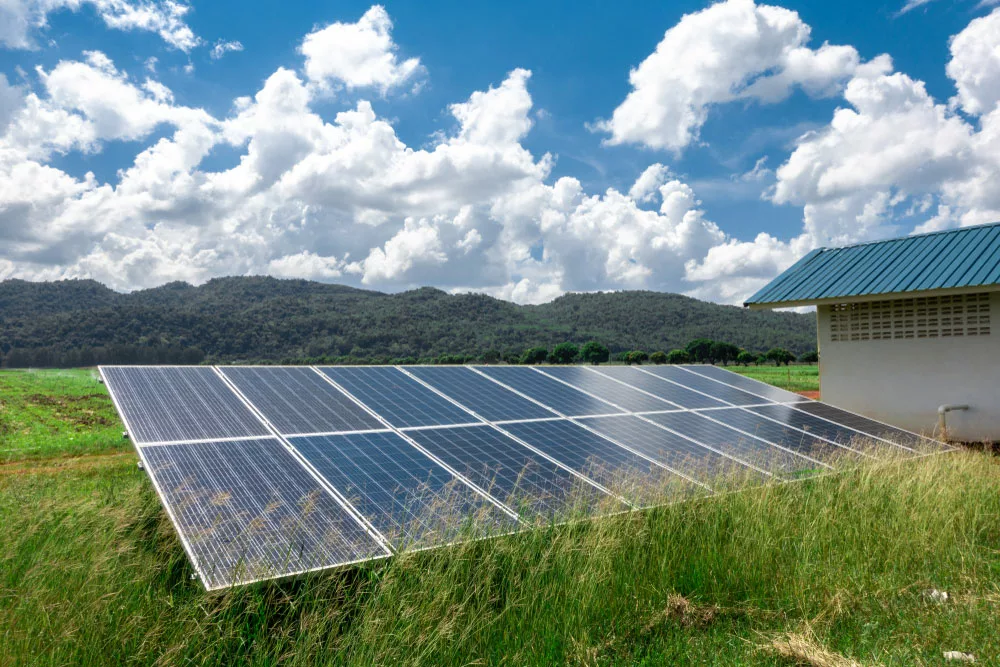
Solar panel on a grass field
Although only solar panels come to mind when people think of stand-alone systems, you may need many extra components to power your home without help from the grid.
In short, stand-alone solar systems possess all the essential equipment for generating, supplying, and storing energy onsite.
Also, you can call them “Off-grid solar systems.” After all, they operate without connection to external power sources.
In contrast to other solar setups, stand-alone systems need batteries to supply power when the sun is unavailable.
However, batteries are expensive. And they add to the overall upfront cost of stand-alone solar systems.
What Can You Use Stand-Alone Solar Systems For?
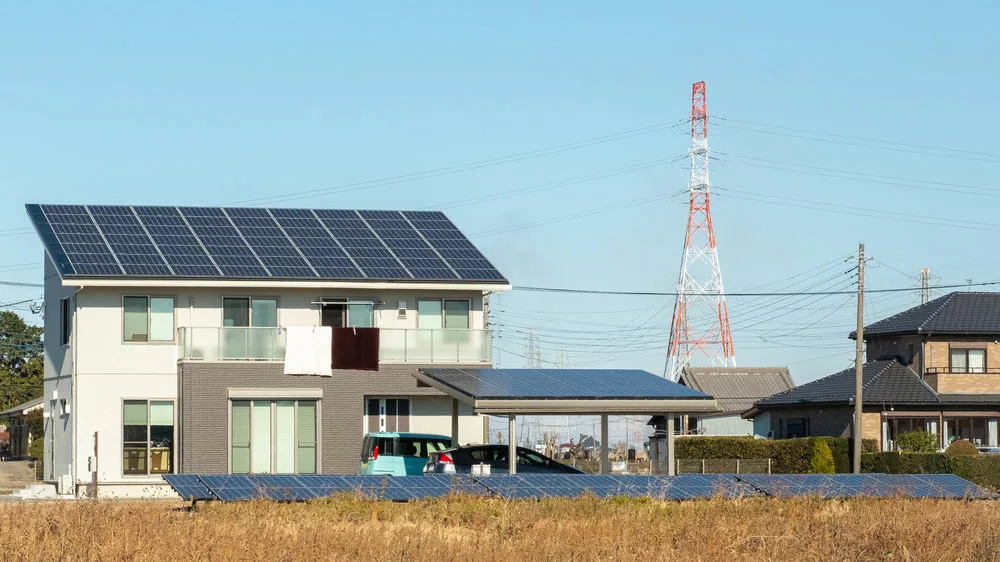
House with solar panel roofs
Some widespread applications of stand-alone solar systems include:
- Supplying charge to portable phones or tablet chargers.
- Powering energy-efficient homes and structures.
- Cutting off reliance on electrical companies and their bills.
- Generating power for small cabins.
- Supplying power to RV appliances.
Note: Stand-alone solar systems are not beneficial for areas with easy access to utility power. So, you can save some costs by opting for grid-tied or hybrid solar systems.
What Components do you Need to Run an Off-Grid Solar System?
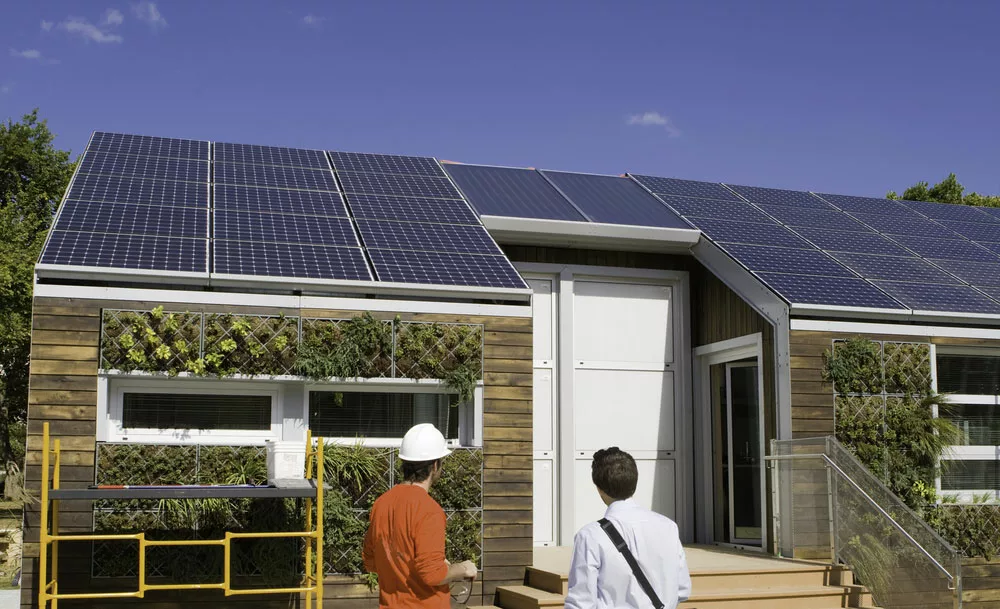
Men are looking at a solar-powered house.
You’ll need the following equipment to install a fully-functioning stand-alone solar system.
Solar batteries
As mentioned previously, solar batteries provide a way to store excess solar energy for overnight or later use.
Hence, stand-alone solar systems require more batteries than other solar options because they don’t rely on the grid.
Junction boxes
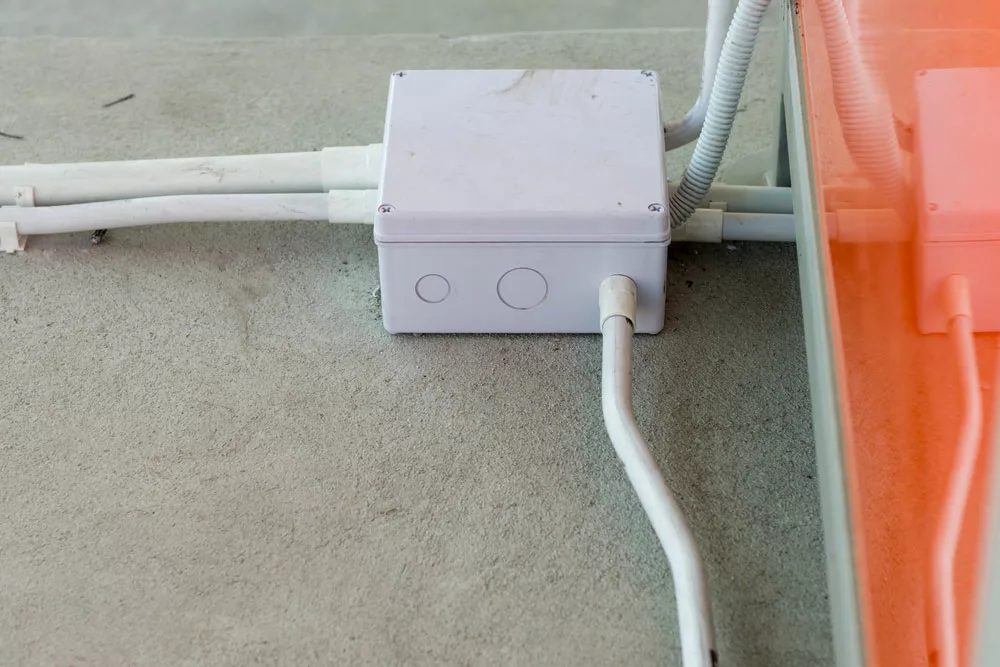
The Junction box
Junction boxes to house and organize your home’s wiring and connections. Also, it protects these connections, which are often vulnerable to damage from environmental conditions and accidental contact.
Solar panels
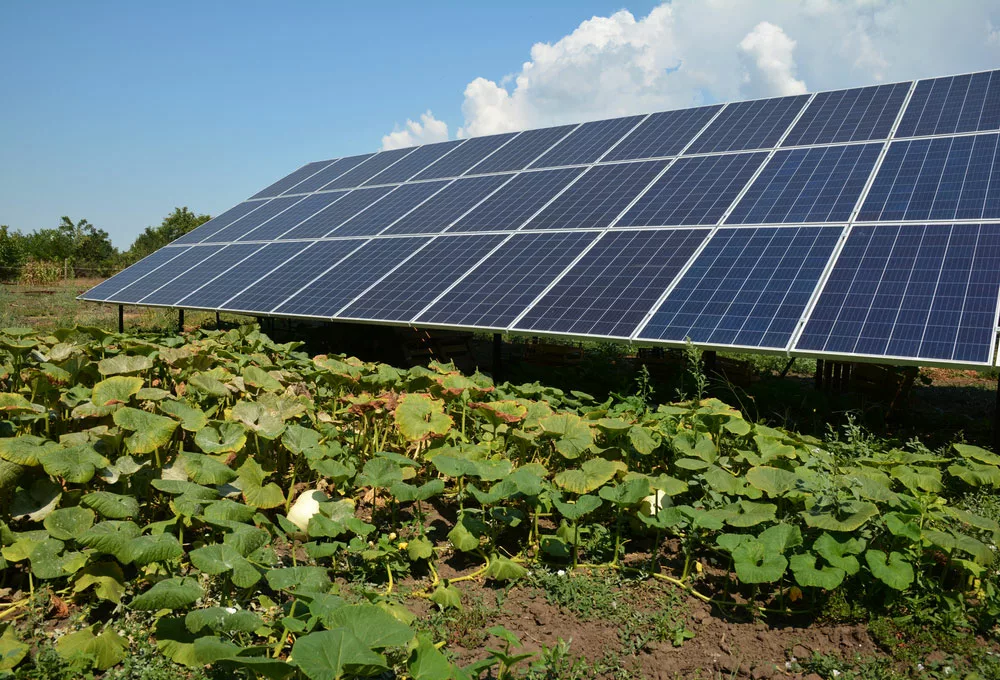
Solar panel
PV panels are the essential equipment of all solar systems. They’re responsible for harnessing the sun’s energy and generating electricity.
So, most modern solar panels use monocrystalline solar cells. However, some homeowners still prefer polycrystalline variants as cost-saving alternatives.
Mounting and racking systems

Men are installing solar panels on the racking system.
Installers won’t attach solar panels to your roof directly. In truth, they often mount them on racking systems. So, they’ll place this equipment at optimal angles for sun exposure before installing the panels.
Solar charge controller
Charge controllers prevent batteries from overcharging to avoid lifespan reduction. Also, they ensure the battery maintains an adequate voltage level.
Overcharged batteries can burst into flames, so keeping your battery system safe with this equipment is crucial.
Wiring
Lastly, you’ll need wires to connect the solar array to your home’s wiring system.
How to Choose a Stand-Alone Solar System
Typically, your solar setup size depends on the power you want the system to provide. You can size up your needs in two methods based on your current usage and load evaluation.
Basing Solar System Size on Current Usage
This option is for you if you want to retain your current electrical usage when switching from grid-tied to stand-alone solar. Start your evaluation by checking your monthly power bills.
It will accomplish the first step of determining your electricity usage in kilowatt-per-hours.
Basing Solar System Size on Load Evaluation
Alternatively, you can complete a total load evaluation to discover how much power your home needs to run. Here’s what you need to do:
Calculate your Total Electricity Requirement
Start by listing all the appliances you want to use and how many hours you’ll run them daily.
It will allow you to calculate each device’s power consumption and how much power you consume daily.
Knowing your daily kWh will help guide your stand-alone solar system choices and your solar battery capacity.
Calculate the Needed Battery Storage Capacity
Next, decide how much energy storage you want for your home.
Hence, you should determine if you want enough storage for a day or if your home requires a backup set.
We recommend opting for solar battery capacities that cover at least two to three days of heavy usage.
Measure your Instantaneous Load Requirements
Before choosing a battery capacity, evaluate how many appliances you’ll run simultaneously. The values from your calculation will show your instantaneous wattage requirements.
Also, you’ll need this data to choose a proper inverter.
Get Your Stand-Alone Solar System Kit
The information from the first three steps is usually enough for solar equipment vendors to provide the best offers for your home.
How Much Does a Stand-Alone Solar System Cost?
Stand-alone solar systems have different types with varying prices. They can cost as low as $50 for phone or tablet chargers to thousands of dollars for more sophisticated systems.
Usually, stand-alone solar system kits that power an entire house can range from $15,000 to $37,000.
Alternatively, models that can power RVs, cabins, and tiny homes may cost between $1,800 to $9,000.
Note: these numbers are just estimates for stand-alone solar systems. Actual prices may vary according to installation charges.
Pros of Using Stand-Alone Solar Systems
Freedom from the Grid
Reducing dependence on the grid is the most popular reason people go off-grid. People in blackout-prone regions have higher chances of losing power supply when the grid shuts off.
Hence, off-grid solar systems can help such people escape blackouts and power failures.
Environmentally Friendly Energy
Stand-alone solar systems cut down carbon emissions since most energy from the grid comes from fossil fuel burning.
Producing your power through renewable sources will help reduce your carbon footprint.
Cons of Stand-Alone Solar Systems
It’s Illegal in some Countries
Although stand-alone solar systems offer immense benefits, some countries make it illegal to go off-grid completely. Such legal restrictions exist in metropolitan areas.
Expensive Upfront Costs
Stand-alone models need more components to run efficiently than grid-tied solar systems. For this reason, they’re more pricey than their grid-connected counterparts.
Stand-Alone Solar Systems vs. Grid-Tied Solar Systems: Which is Better?
Choosing between an off-grid and grid-tied solar system depends on your location. So, if you stay in a region with a stable power supply, you may want to stick with grid-connected models.
However, stand-alone solar systems will benefit greatly from rural areas with limited access to grid electricity.
Rounding Up
Stand-alone solar systems sound like the perfect option at face value. But you must consider several factors before setting up a complete system.
Despite the heavy cost, off-grid models will grant freedom from utility companies, and you’ll get rid of electricity bills.
Moreover, not all countries allow off-grid systems, especially in metropolitan settings. Purchasing a hybrid or grid-tied system would offer more benefits in such situations.
Do you have more questions? Feel free to contact us, and we’ll be happy to help.
